| The Mounted Arm
|
|
The Billinghurst-Requa Volley Gun The Images Presented Below are of Original weapons "cleaned" up photographically for clarity. |
|
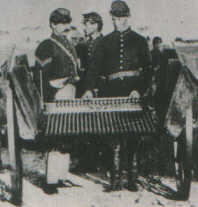 |
A BILLINGHURST-REQUA BATTERY AS IT APPEARED IN AN EARLY FIELD TEST Although the Gatling Gun, patented Nov. 4, 1862, proved to be a superior weapon, the Billinghurst-Requa battery , patented Sept. 16, 1862, predates the Gatling and for this reason has been referred to as the first "practical" machine gun to be used during the war. The multiple barrel design was first suggested in the Renaissance, but it was the invention of the self-contained metal cartridge that made the idea practical. Only three gunners were needed to service the Requa volley gun. The cleverly arranged breech which closed on a piano hinge allowed for the ammunition strips to be loaded, fired, extracted, and reloaded quickly. |
| Rear View of the Volley Gun with the Protecing Barrel Covers Open and the Breech Mechanism Closed There are records of the Federals using volley guns at the siege of Charleston, SC in 1863. Elements of the 39th Illinois Infantry, the 3rd New Hampshire Artillery, and the 48th New York Volunteer Infantry used Requa batteries in the attack on Fort Wagner. They trained their volley guns on the Confederate works in support of an infantry attack. The Federal army may have had as many as one hundred volley guns, but most were placed in the defenses around Washington, DC. The Confederate government purchased at least twenty volley guns prior to the opening of hostilities and may have purchased more thereafter. Incomplete southern records have obscured any exact record of their number or deployment. |
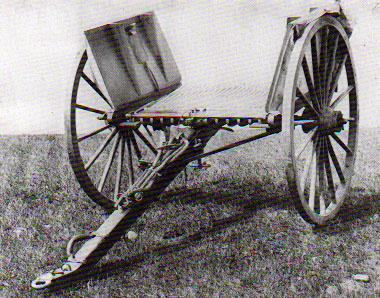 |
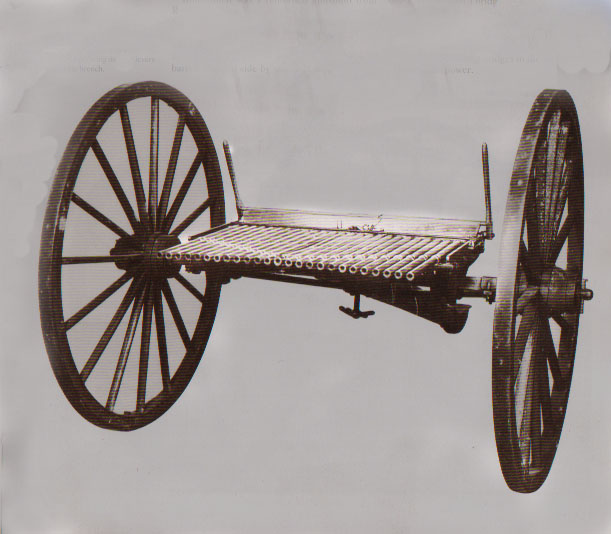 |
Front View of the Requa Battery on Exhibit at the Kentucky State Museum When the side mounted loading levers were up (as in this picture) the breech was open. A powder train was laid behind the ammunition strip. Pushing the levers forward secured the breech. A musket cap was placed on the centrally located priming nipple and activated with a simple flip-over hammer mechanism.The barrels, each 24 inches long, fired sequentially from the center out with a characteristic rippling effect. Note the elevating screw below the breech mechanism. |
| A Better View of the Dismounted Breech with Cartridge Strip Requa batteries were sometimes called "Covered Bridge Guns" because they could command the length and width of a bridge. This probably ancedotal nickname belies the purpose of the weapon which was to be deployed in the field in support of infantry regiments. Although designs for more barrels existed, Volley guns with 25 rifle barrels set in parallel were most common. The weapon could be fired at the rate of seven strips per minute by a trained crew. This gave a rate of fire of 175 rounds per minute. The strips were pre-loaded and carried in an ammunition case on a limber. The limber could be pulled by as few as two horses. |
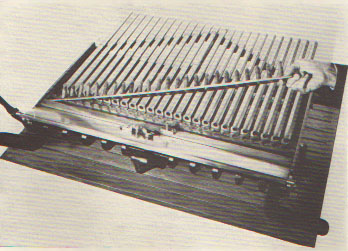 |
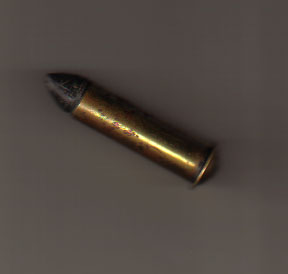 |
An authentic Requa Battery cartridge This is a civil war period cartridge from a Billinghurst-Requa gun. Each of the twenty-five cartridges was placed in a metal strip that allowed for quick reloading of the gun. The .52 caliber cartridge is about the size of a 45-70 with a simple touch hole in the rounded button back.The metal case is two inches long,and the overall length is two and one-half inches. The aim of the twenty-five barrels could be converged to a point or diverged by a lever beneath the frame, so as to scatter the balls 120 yards across the field of fire in a distance of 1000 yards. The weight of the Requa battery-gun was approximately 1400 pounds. |
| |
|
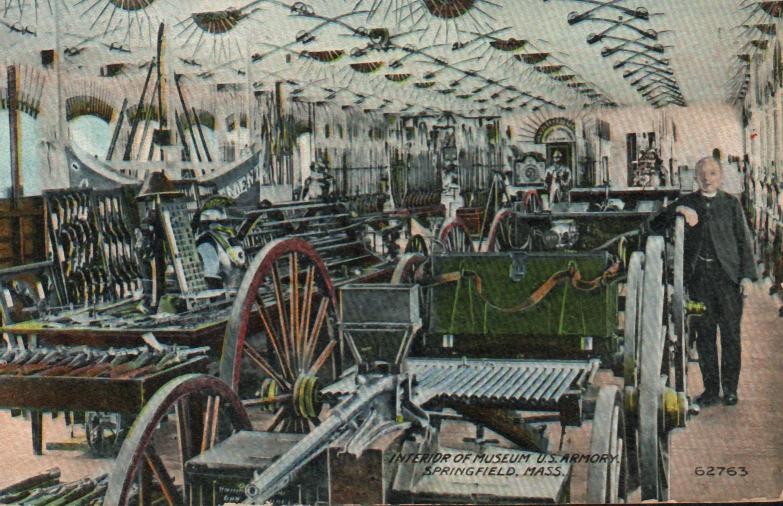 |
The Springfield Arsenal Museum in the 19th Century A surviving Requa gun sits among the exhibits from this very old, hand colored print.Just in front of it is a "coffee mill" gun, and just behind its limber. |
| |
|
|
|
|
|
|
|